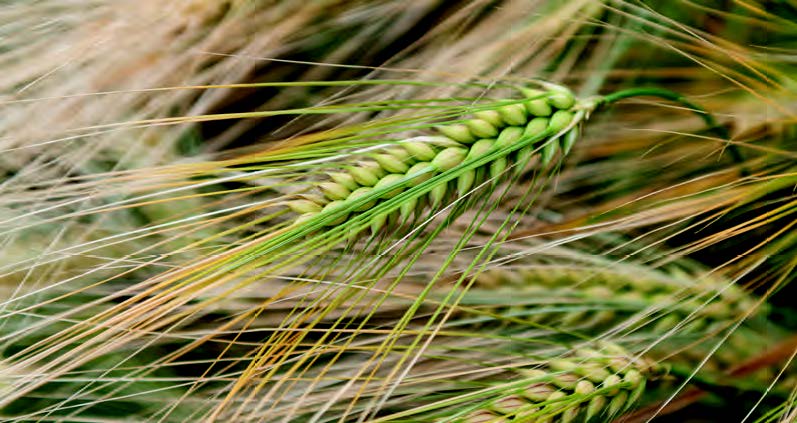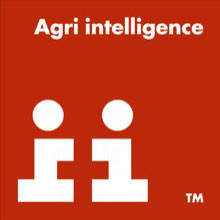This season has been a real barley yellow dwarf virus (BYDV) eye-opener for Phil Lockyer and his partner Kate at Lower Eggbeer, Cheriton Bishop near Exeter on the northern edge of Dartmoor National Park.
Despite diligent field-walking every two days until the December cold snap, they found no aphids at all in the winter wheat and barley they grow on their generally heavy, fairly steep and well-manured ground.
So, in the interests of the environment, they decided to do without an autumn insecticide; a decision they have come to regret in a major way with half their wheat crop and a good 20% of their winter barley developing significant BYDV infections from this spring.
“BYDV really hadn’t been a problem here until this year, even after the loss of Redigo Deter,” explains Mr Lockyer. “We’ve tended to see small patches of infection on and off but nothing alarming. Although the extra cost of an insecticide is negligible, we have always been keen to avoid insecticide spraying wherever we can.
“With mid-October the cut-off for reliable winter cereals drilling on our ground, we start sowing barley in the last week of September and move on to the wheat in the second week in October. We accept this means our crops are at a higher BYDV as well as Septoria and lodging risk than many. But the risk of not getting crops in is even greater.”
To counter the virus threat, Mr Lockyer employs the Agrii BYDV Alert app to give the best possible estimate of aphid development risk from local day degree monitoring, and inspects all their crops religiously throughout the main danger period. He had insecticide ready in store for rapid application last winter should the need arise, but left it there because there were no first-generation aphids to be found, let alone a threshold level.
“We started to become aware of BYDV in early February but still couldn’t find significant numbers of aphids,” he recalls.
“They only really became apparent in April, by which time it was too late to do much about them. And the very last thing we want to do is use an insecticide at this stage of the season, anyway.
“Substantial areas of the Graham and KWS Dawsum wheat and KWS Tardis barley we grow have really suffered. It looks like we’ll be taking the sort of yield hit we can ill-afford with margins as tight as they are just now.
“We’re pretty hot on the field-walking, so I don’t think we missed any aphids early on. Which means they just have come in later. As it went down to -9º in December and stayed cold for a good 10 days, we thought we’d be through any real migration. Maybe that’s something we can no longer assume in today’s climate.
“Whatever the reason, this season has been a real eye-opener for us. The worst infections have definitely been in earlier developing, lusher crops carrying a lot of leaf on our best ground.”
An equal eye-opener at Lower Eggbeer has been the extensive local variety and agronomy trials they run with Agrii on some of their ‘best dirt’. Given the ground’s fertility, both the wheat and barley plots were badly hit by the virus; especially those receiving the highest early spring nitrogen treatments.
However, the BYDV-resistant wheat, RGT Grouse and the BYDV-tolerant barley, KWS Feeris included in the plots both stood out a mile for their cleanness alongside every other variety, offering a potential solution to the farm’s IPM dilemma. The resistant wheat had no symptoms right through to harvest, while the tolerant barley did show a little later on but nothing worth worrying about, and nowhere near as much as any other variety in the plots.
“The Agrii trials we have hosted for several years now give us a great opportunity to look ahead,” Mr Lockyer says. “They have provided some especially good food for thought this time around.
“We can’t delay drilling if we want to be sure of getting our winter crops in. So, without any seed-treatment protection, the only solution we’ve had up to now has been the insecticide spraying we really don’t want to have to do.
“The BYDV Alert app is valuable in helping us target our spraying – when we aren’t tempted to disregard its warning, that is! To have the in-built protection of BYDV tolerance or resistance would be a big step forward even from the days of Deter.
“On the barley side, we’ve always preferred two rows. However, we’re keen to put half our acreage into KWS Feeris this autumn if we can. It’s well-placed on the Recommended List and would be particularly valuable on the wetter ground we can’t risk putting the sprayer onto most Novembers.

“BYDV resistance would be a real boon for our wheat-growing,” he adds. “While RGT Grouse has shrugged-off the BYDV, though, there are too many question marks over other elements of its agronomy for us yet.”
Knowing what can so easily happen if their best environmental intentions go awry, Mr Lockyer will be keeping a particularly close eye on the developing BYDV-resistant wheat pipeline from now on in the Agrii trials. After all, a wheat variety he can rely on to deal with the virus without the need for any autumn insecticide would raise his integrated pest management to an altogether different level.
While waiting for A BYDV resistant wheat variety that also has both the Septoria resistance and standing power he needs for the local conditions, he plans to focus his future cropping squarely on slower developing, more resilient varieties, with agronomy that minimises the risk of lush crop growth in today’s generally milder winters.
“This season has taught us we can’t risk assuming we won’t have a BYDV problem just because we don’t see aphids in our crops before Christmas,” concludes Mr Lockyer. “That’s why a reliable genetic solution is such an exciting prospect.”


